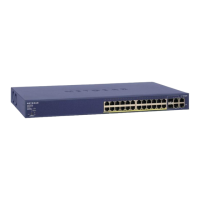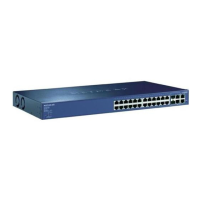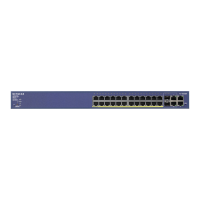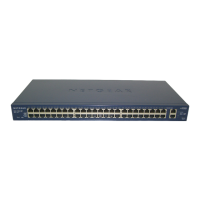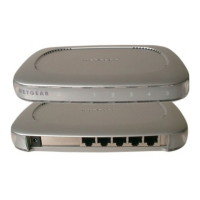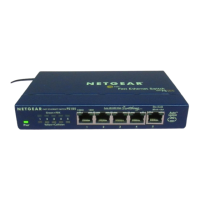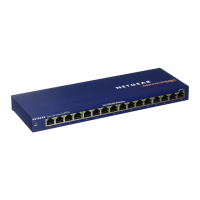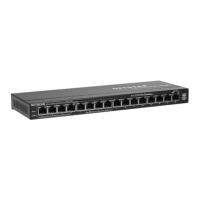Do you have a question about the NETGEAR FS728TP-100NAS and is the answer not in the manual?
Details the necessary hardware and software facilities required to install and manage the switch.
Describes the web-based management interface and the SmartWizard Discovery utility.
Guides users through the initial login process to access the switch's web management interface.
Covers configuring IP addresses, subnet masks, and gateways for network connectivity and management.
Details how to configure individual switch ports, including speed, duplex, and status settings.
Explains Virtual LAN (VLAN) configuration for segmenting networks and improving traffic efficiency.
Details Spanning Tree Protocol (STP) configuration to prevent network loops and ensure a single path.
Explains Quality of Service settings for prioritizing network traffic based on class of service.
Covers user authentication, RADIUS, TACACS+, and access control for device management.
Details 802.1X configuration and port-based authentication methods for network access control.
Explains Access Control Lists (ACLs) for defining packet filtering and rules based on MAC or IP addresses.
Details the necessary hardware and software facilities required to install and manage the switch.
Describes the web-based management interface and the SmartWizard Discovery utility.
Guides users through the initial login process to access the switch's web management interface.
Covers configuring IP addresses, subnet masks, and gateways for network connectivity and management.
Details how to configure individual switch ports, including speed, duplex, and status settings.
Explains Virtual LAN (VLAN) configuration for segmenting networks and improving traffic efficiency.
Details Spanning Tree Protocol (STP) configuration to prevent network loops and ensure a single path.
Explains Quality of Service settings for prioritizing network traffic based on class of service.
Covers user authentication, RADIUS, TACACS+, and access control for device management.
Details 802.1X configuration and port-based authentication methods for network access control.
Explains Access Control Lists (ACLs) for defining packet filtering and rules based on MAC or IP addresses.
| Type | Managed |
|---|---|
| PoE | Yes |
| PoE Ports | 24 |
| Switching Capacity | 56 Gbps |
| Layer | Layer 2 |
| Jumbo Frame Support | Yes |
| VLAN Support | Yes |
| Quality of Service (QoS) | Yes |
| Power Supply | Internal |
| PoE Standard | IEEE 802.3af |
| PoE Power per Port | 15.4W |
| MAC Address Table Size | 8000 |
| Security Features | 802.1X |
| Management | Web-based GUI |
| Weight | 2.7 kg |
| Operating Temperature | 0 - 40 °C |
| Storage Temperature | -20 to 70°C |
| Humidity | 90% maximum (non-condensing) |
| Features | PoE support |
| Forwarding Rate | 41.7 Mpps |
| Dimensions | 17.32 x 10.24 x 1.72 in (440 x 260 x 43.7 mm) |

